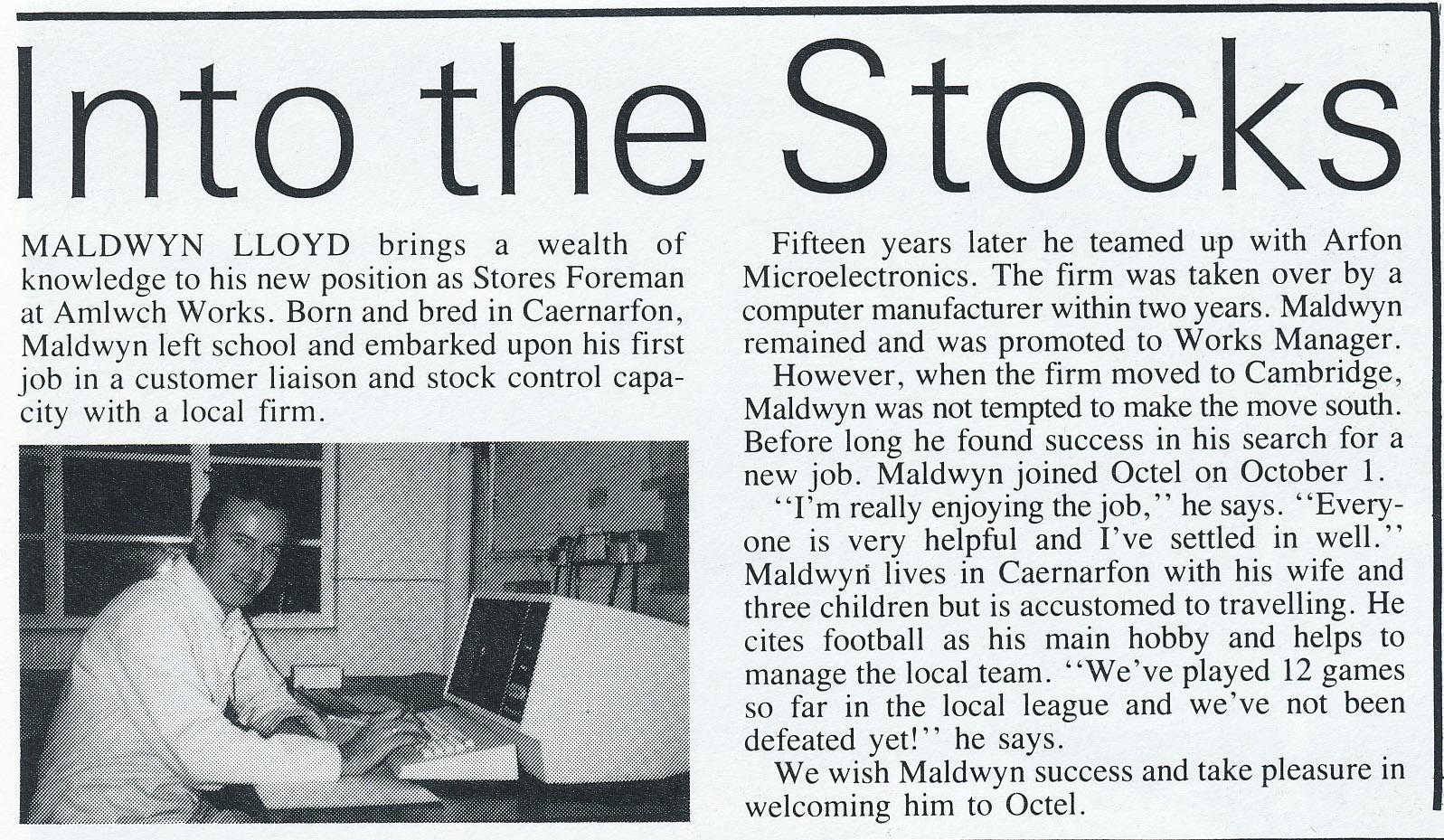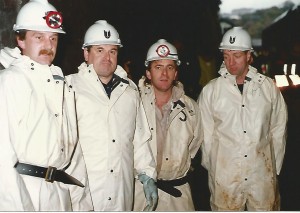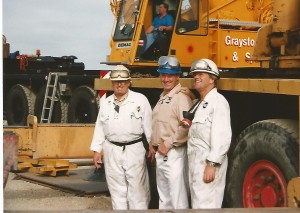The maintenance section provided a service to the process section that is essential for the continual safe production of saleable product to the correct specification. The service is divided into two main areas. These are based on planned maintenance schedules and breakdown repairs. In addition contract work may be used for some tasks which are outside the scope of members of the maintenance section.
A computer program called Maximo is used to help the scheduling process of all maintenance. The program is also used for the recording of all Maintenance Work Orders (MWO). These are prioritised requests for jobs. These range from breakdown jobs that require immediate attention (Priority 7), jobs which need to be completed within a week (Priority 3) to those that require a shutdown to complete (Priority 0)
A Maintenance Planner is responsible for scheduling all planned maintenance. This would range from a simple replacement of a bursting disc on a 6 monthly planned maintenance (PM) basis to a 5 yearly independent statutory inspection of the internals of all the vessels on the MPBF plant. The Maintenance Planner must keep in constant dialogue with other members of the maintenance team to see which breakdown jobs are occurring and where possible to schedule other jobs to be done at the same time.
A weekly maintenance plan is being developed. The idea is to produce a list of planned maintenance activities which can be done the following week. This is normally made up from the priority 3 & 4 jobs already entered into the Maximo system. A draft list is produced by the SPM early in the week and takes account of the priority requirements of each of the process plants and the known production requirements for the following week. The Planner refines the draft list by taking into account any necessary planned maintenance activities or inspections and the availability of stores materials and labour resources. The final weekly plan is then issued towards the end of the week and craftsmen made aware of their role for the following week.
A daily planning meeting was held at 11:30. This meeting was attended by the SPM, maintenance planner and the craft supervisors. The weekly plan is refined for the following day’s work. In addition breakdown and other unplanned maintenance work is scheduled and resources assigned. The SPM is responsible for defining the process preparations which are required for the daily plan and to ensure that the night SPM and his operators provide the maintenance section with the plant in the correct condition at the planned time.
During office hours any requests for urgent maintenance assistance would be made by the SPM direct to the relevant craft supervisor. A Maximo MWO would be raised to ensure that a record is kept of all work carried out. For urgent maintenance assistance outside normal hours a call in system exists. The administration department provides a prioritised list of craftsmen available. The SPM is responsible for calling out the craftsman, ensuring that the call out has been documented for salary payment and that a General Safety Certificate and MWO has been raised.
The Maintenance Planner is also responsible for issuing to the SPM a list of monthly alarm and trip testing requirements. The SPM must ensure that, as the opportunity arises on each plant, the relevant alarms and trip are tested by the operator. If they are faulty a MWO should be raised. If they are fully operational a note to that effect must be returned on the alarm / trip test record form to the Maintenance Planner. It is especially important to look through the outstanding alarm / trips to be tested whenever a plant is to be shut down to ensure that where possible they are tested each month.
Other interactions with the maintenance department concerning the issue of permits is dealt with in the section on the Operation’s Co-ordinator below. It is essential that the SPM has a good understanding of the operation of all the site permits systems. To protect craftsmen working on a plant a site maintenance process fluid isolation standard is in operation. Prior to maintenance a plant would be shut down by process and where practical the process fluids drained.
All changes to plant hardware are controlled by the Change Control Request (CCR) Procedure. Once completed the form should be sent to the Maintenance Planner where it is registered and discussed at the next Change Authorisation Team (CAT) meeting. For emergency CCR outside normal hours the SPM should discuss the completed CCR form with the Plant Manager or Duty Manager. If both agree that the change is acceptable and needs to be done immediately a temporary change can be authorised. This temporary change must be considered at the next CAT meeting. The CCR procedure should be used for ALL changes to plant hardware. This includes for example the fitting of temporary clips to holed pipework.
The company has a range of engineering standards. These standards cover the working of many aspects of the work of the maintenance department. They provide both standing instructions and information to members of the department. The information is available as OCP500 in Acrobat electronic format on the network.
Contractors are looked after by a contracts co-ordinator. His role is to introduce contractors to the site. To arrange a safety induction talk by safety personnel. To arrange for plant shutdowns and permits as required for the contractors to complete their work. He is responsible for monitoring the work of the contractors. If for some reason the contractors have to be stopped from working because of process or maintenance activities the Contracts co-ordinator should also be informed.
Operations co-ordinator
Following on from the daily maintenance planning meeting the Operations co-ordinator is responsible for generating the General Safety Certificates (GSC) for the planned jobs. In addition a Maintenance Job Plan (MJP) will be printed out if one exists. The MJP is a detailed description of all the process preparation work, mechanical , electrical and process isolations required before a job can start. The plans also describe the maintenance work which should be under taken. Where a MJP exists it will be issued with the GSC and the Process operators are required to read and follow the plan and mark in the relevant box when an action has been completed. The craftsmen are also require to do the same. The MJP contains a space to allow any changes that were necessary from the plan to be recorded.
At the end of the job the MJP is returned with the GSC to the Operations Co-ordinator and then to the Maintenance Planner. Any notes made on the MJP can then be studied and be used to update the plan.The Operations Co-ordinator will have prepared all the planned GSC by early afternoon. They are then taken to the Craft Supervisors for additional information and allocation of the crafts man to work on them the following day. The GSC are returned to the SPM office by the end of the afternoon.
Those GSC which are acting as an isolation spade or those requiring special process attention are marked with a red star. The night SPM should give these special attention and ensure that preparations are complete by the morning shift.
Overnight the SPM enters the details of the GSC into the Job-plan.xls spread sheet. He also ensures that any process preparation is completed. These GSC are passed back to the Operations Co-ordinator in the morning to be issued to the craftsmen. The over night SPM also collects any GSC still remaining on site and returns them to the Operations Co-ordinators office.
It is the Operations Co-ordinator who then controls the craftsmen activity during the day. He needs to be aware as to all job including contract jobs which are taking place on the site. He is also responsible for all paper work administration. Certain GSC which are considered to carry a higher hazard need to be counter signed by the SPM before the craftsman is allowed to start work.
As well as preparing the GSC the Operations Co-ordinator also ensures that the correct permits are raised to accompany the certificate. Examples are isolation, flame or vessel entry permits.
Flame permits are normally completed by the Safety Supervisor however they are counter signed by the SPM. Outside normal hours the SPM raises the permit.
Electricians isolate drives based on an electrical isolation permit raised by the operations co-ordinator. This permit is to be used whenever there is a possibility that a drive motor will have to be disconnected and the fuses are pulled. If it is only the intention to ensure that a drive cannot be started and that no electrical work is required the electrical isolator can be locked off. This is done by the SPM after raising a GSC.
A separate note is kept of all GSC which depend on an electrical isolation certificate. Once all jobs are complete the craftsman and Operation Co-ordinator sign the re-isolation part of the certificate.
For entry to vessels and confined spaces the Operations Co-ordinator will request the SPM to raise a vessel entry permit. The SPM must have attended a confined spaces training course and understand the checks that need to be completed before allowing someone to enter a confined space.It is essential that the SPM has a good understanding of the operation of all the site permits systems.
The Operation’s Co-ordinator is also responsible for the administration of the visitors to site. All non Amlwch employees who wish to visit a site area must contact the Operation’s Co-ordinator beforehand. Those visitors without site knowledge must be accompanied by a site based “Host”. The Operations Co-ordinator should discuss the visit with the relevant plant operator. If satisfied the Operations Co-ordinator should get the visitor to sign in the plant visit records book. The visitor should also sign out at the end of the day.
The SPM and Operations Co-ordinator need to be in constant communication during the day. Each must update the other on site developments. This includes work progress and availability of plant for shut down or start up. At night and at other times when the Operation’s Co-ordinator is not available the SPM carries out his duties. It is therefore important that the SPM is aware of all aspects of the Operation’s Co-ordinator’s job.
Stores
Of course for maintenace you need spares. The stores foreman was Maldwyn Lloyd who had just joined Octel in 1987.



